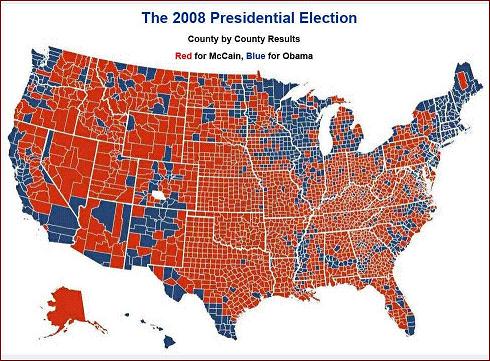25 THINGS SOON ABOUT TO BECOME EXTINCT IN AMERICA
25. U.S. Post Office
They are pricing themselves out of existence. With e-mail, and
and on-line services they are a relic of the past. (refer to #9)
24. Yellow Pages
This year will be pivotal for the global Yellow Pages industry.
Much like newspapers, print Yellow Pages will continue to bleed
dollars to their various digital counterparts, from Internet
Yellow Pages (IYPs), to local search engines and combination
search/listing services like Reach Local and Yodel Factors like an
acceleration of the print 'fade rate' and the looming recession
will contribute to the onslaught. One research firm predicts the
falloff in usage of newspapers and print Yellow Pages could even
reach 10% this year -- much higher than the 2%-3% fade rate seen
in past years.
23. Classified Ads
The Internet has made so many things obsolete that newspaper
classified ads might sound like just another trivial item on a
long list. But this is one of those harbingers of the future that
could signal the end of civilization as we know it. The argument
is that if newspaper classifies are replaced by free on-line
listings at sites like Craigslist.org and Google Base, then
newspapers are not far behind them..
22. Movie Rental Stores
While Netflix is looking up at the moment, Blockbuster keeps
closing store locations by the hundreds.. It still has about 6,000
left across the world, but those keep dwindling and the stock is
down considerably in 2008, especially since the company gave up
a quest of Circuit City. Movie Gallery, which owned the Hollywood
Video brand, closed up shop earlier this year. Countless small
video chains and mom-and-pop stores have given up the ghost
already.
21. Dial-up Internet Access
Dial-up connections have fallen from 40% in 2001 to 10% in 2008.
The combination of an infrastructure to accommodate affordable
high speed Internet connections and the disappearing home phone
have all but pounded the final nail in the coffin of dial-up
Internet access.
20. Phone Land Lines
According to a survey from the National Center for Health
Statistics, at the end of 2007, nearly one in six homes was
cell-only and, of those homes that had land lines, one in eight
only received calls on their cells.
19. Chesapeake Bay Blue Crabs
Maryland 's icon, the blue crab, has been fading away in Chesapeake
Bay. Last year Maryland saw the lowest harvest (22 million pounds)
since 1945. Just four decades ago the bay produced 96 million
pounds. The population is down 70% since 1990, when they first did
a formal count. There are only about 120 million crabs in the bay
and they think they need 200 million for a sustainable population.
Over-fishing, pollution, invasive species and global warming get
the blame.
18. VCRs
For the better part of three decades, the VCR was a best-seller
and staple in every American household until being completely
decimated by the DVD, and now the Digital Video Recorder (DVR).
In fact, the only remnants of the VHS age at your local Wal-Mart or
Radio Shack are blank VHS tapes these days. Pre-recorded VHS
tapes are largely gone and VHS decks are practically nowhere to
be found. They served us so well.
17. Ash Trees
In the late 1990's, a pretty, iridescent green species of beetle,
now known as the emerald ash borer, hitched a ride to North
America with ash wood products imported from eastern Asia .
In less than a decade, its larvae have killed millions of trees in
the Midwest , and continue to spread. They've killed more than
30 million ash trees in southeastern Michigan alone, with tens of
millions more lost in Ohio and Indiana. More than 7.5 billion ash
trees are currently at risk.
16. Ham Radio
Amateur radio operators enjoy personal (and often worldwide)
wireless communications with each other and are able to support
their communities with emergency and disaster communications
if necessary, while increasing their personal knowledge of
electronics and radio theory However, proliferation of the
Internet and its popularity among youth has caused the decline of
amateur radio. In the past five years alone, the number of people
holding active ham radio licenses has dropped by 50,000, even
though Morse Code is no longer a requirement.
15. The Swimming Hole
Thanks to our litigious society, swimming holes are becoming a
thing of the past. '20/20' reports that swimming hole owners, like
Robert Every in High Falls, NY, are shutting them down out of
worry that if someone gets hurt they'll sue. And that's exactly
what happened in Seattle. The city of Bellingham was sued by Katie
Hofstetter who was paralyzed in a fall at a popular swimming hole
in Whatcom Falls Park. As injuries occur and lawsuits follow,
expect more swimming holes to post 'Keep out!' signs.
14. Answering Machines
The increasing disappearance of answering machines is directly
tied to No 20 our list -- the decline of landlines. According to
USA Today, the number of homes that only use cell phones jumped
159% between 2004 and 2007. It has been particularly bad in New
York ; since 2000, landline usage has dropped 55%. It's logical
that as cell phones rise, many of them replacing traditional
landlines, that there will be fewer answering machines.
13. Cameras That Use Film
It doesn't require a statistician to prove the rapid disappearance
of the film camera in America . Just look to companies like Nikon,
the professional's choice for quality camera equipment. In 2006,
it announced that it would stop making film cameras, pointing to
the shrinking market -- only 3% of its sales in 2005, compared to
75% of sales from digital cameras and equipment.
12. Incandescent Bulbs
Before a few years ago, the standard 60-watt (or, yikes, 100-watt)
bulb was the mainstay of every U.S. home. With the green movement
and all-things-sustainable-energy crowd, the Compact Fluorescent
Lightbulb (CFL) is largely replacing the older, Edison-era
incandescent bulb. The EPA reports that 2007 sales for Energy Star
CFLs nearly doubled from 2006, and these sales accounted for
approximately 20 percent of the U.S. light bulb market. And
according to USA Today, a new energy bill plans to phase out
incandescent bulbs in the next four to 12 years.
11. Stand-Alone Bowling Alleys
Bowling Balls....US claims there are still 60 million Americans who
bowl at least once a year, but many are not bowling in stand-alone
bowling alleys. Today most new bowling alleys are part of
facilities for all types or recreation including laser tag, go-karts,
bumper cars, video game arcades, climbing walls and glow
miniature golf. Bowling lanes also have been added to many
non-traditional venues such as adult communities, hotels and
resorts, and gambling casinos.
10. The Milkman
According to the U.S. Department of Agriculture, in 1950, over
half of the milk delivered was to the home in quart bottles, by
1963, it was about a third and by 2001, it represented only 0.4%
percent. Nowadays most milk is sold through supermarkets in gallon
jugs. The steady decline in home-delivered milk is blamed, of
course, on the rise of the supermarket, better home refrigeration
and longer-lasting milk. Although some milkmen still make the
rounds in pockets of the U.S., they are certainly a dying breed.
9. Hand-Written Letters
In 2006, the Radicati Group estimated that, worldwide, 183 billion
e-mails were sent each day. Two million each second. By November
of 2007, an estimated 3.3 billion Earthlings owned cell phones,
and 80% of the world's population had access to cell phone
coverage. In 2004, half-a-trillion text messages were sent, and
the number has no doubt increased exponentially since then. So
where amongst this gorge of gabble is there room for the elegant,
polite hand-written letter?
8. Wild Horses
It is estimated that 100 years ago, as many as two million horses
were roaming free within the United States . In 2001, National
Geographic News estimated that the wild horse population has
decreased to about 50,000 head. Currently, the National Wild Horse
and Burro Advisory board states that there are 32,000 free roaming
horses in ten Western states, with half of them residing in
Nevada . The Bureau of Land Management is seeking to reduce the
total number of free range horses to 27,000, possibly by selective
euthanasia.
7. Personal Checks
According to an American Bankers Assoc. report, a net 23% of
consumers plan to decrease their use of checks over the next two
years, while a net 14% plan to increase their use of PIN debit.
Bill payment remains the last stronghold of paper-based
payments -- for the time being. Checks continue to be the most
commonly used bill payment method, with 71% of consumers paying
at least one recurring bill per month by writing a check. However,
a bill-by-bill basis, checks account for only 49% of consumers'
recurring bill payments (down from 72% in 2001 and 60% in 2003).
6. Drive-in Theaters
During the peak in 1958, there were more than 4,000 drive-in
theaters in this country, but in 2007 only 405 drive-ins were
still operating. Exactly zero new drive-ins have been built since
2005. Only one reopened in 2005 and five reopened in 2006, so
there isn't much of a movement toward reviving the closed ones.
5. Mumps & Measles
Despite what's been in the news lately, the measles and mumps
actually, truly are disappearing from the United States . In 1964,
212,000 cases of mumps were reported in the U.S. By 1983,
this figure had dropped to 3,000, thanks to a vigorous vaccination
program. Prior to the introduction of the measles vaccine,
approximately half a million cases of measles were reported in the
U.S. annually, resulting in 450 deaths. In 2005, only 66 cases
were recorded.
4. Honey Bees
Perhaps nothing on our list of disappearing America is so dire;
plummeting so enormously; and so necessary to the survival of our
food supply as the honey bee Very scary. 'Colony Collapse
Disorder,' or CCD, has spread throughout the U.S. and Europe over
the past few years, wiping out 50% to 90% of the colonies of many
beekeepers -- and along with it, their livelihood.
3. News Magazines and TV News
While the TV evening newscasts haven't gone anywhere over the last
several decades, their audiences have. In 1984, in a story about
the diminishing returns of the evening news, the New York Times
reported that all three network evening-news programs combined had
only 40.9 million viewers. Fast forward to 2008, and what they
have today is half that.
2. Analog TV
According to the Consumer Electronics Association, 85% of
homes in the U.S. get their television programming through cable
or satellite providers. For the remaining 15% -- or 13 million
individuals -- who are using rabbit ears or a large outdoor
antenna to get their local stations, change is in the air. If you
are one of these people you'll need to get a new TV or a converter
box in order to get the new stations which will only be broadcast
in digital.
1. The Family Farm
Since the 1930's, the number of family farms has been declining
rapidly. According to the USDA, 5.3 million farms dotted the nation
in 1950, but this number had declined to 2.1 million by the 2003
farm census (data from the 2007 census hasn't yet been published).
Ninety-one percent of the U.S. FARMS are small Family Farms.
Both interesting and saddening, isn't it?
Bit by bit Going away!!!!!!!!!





